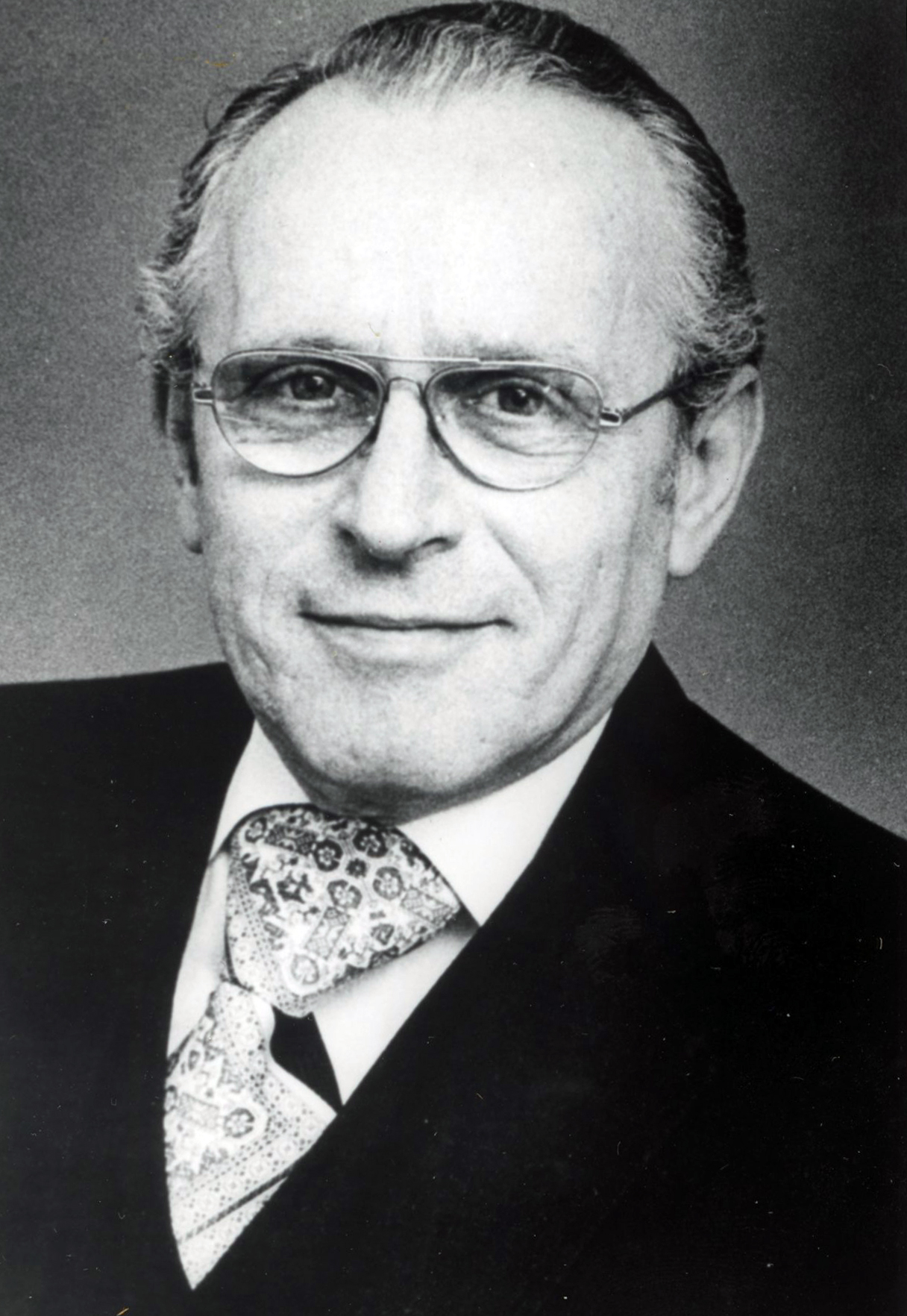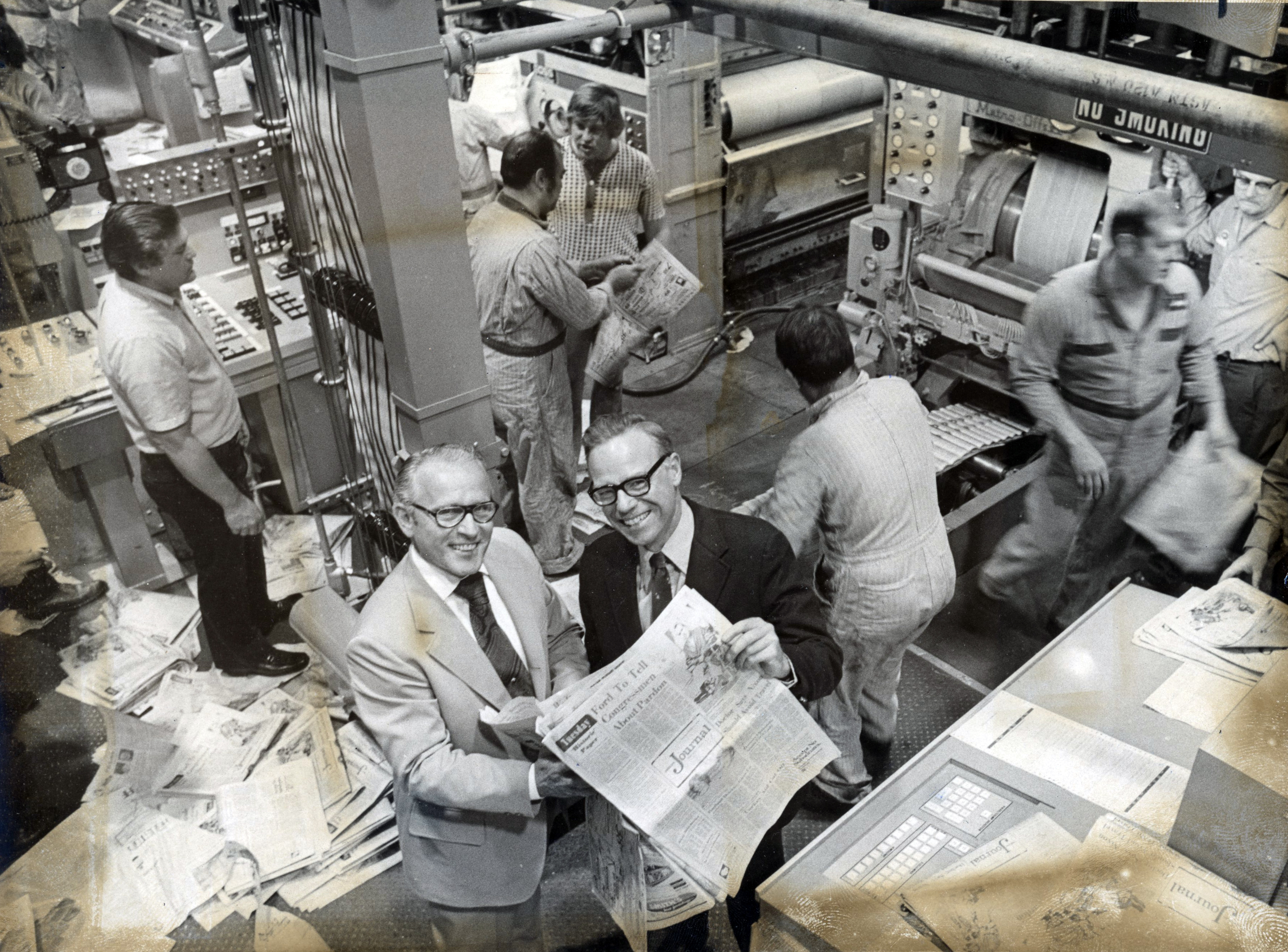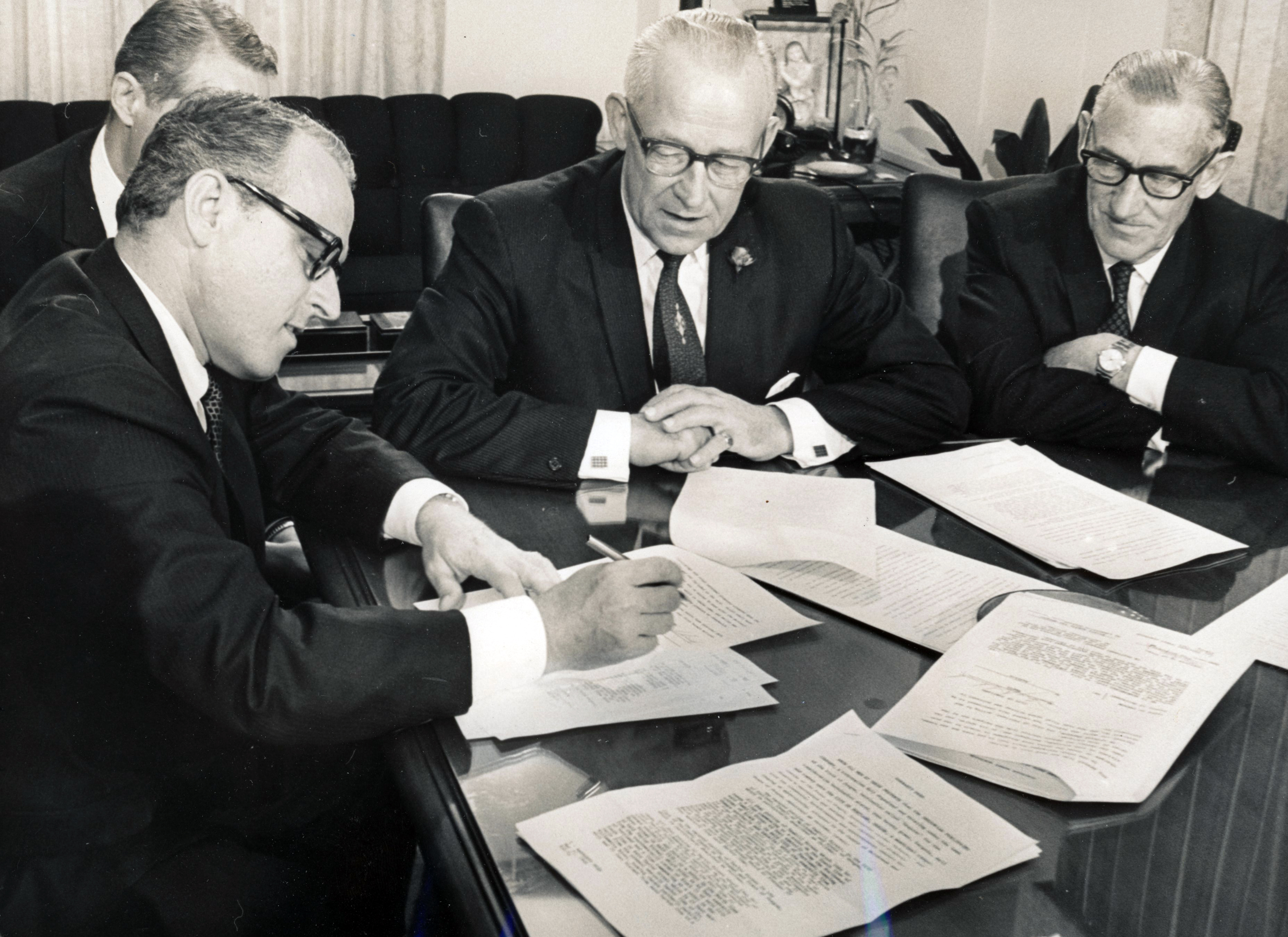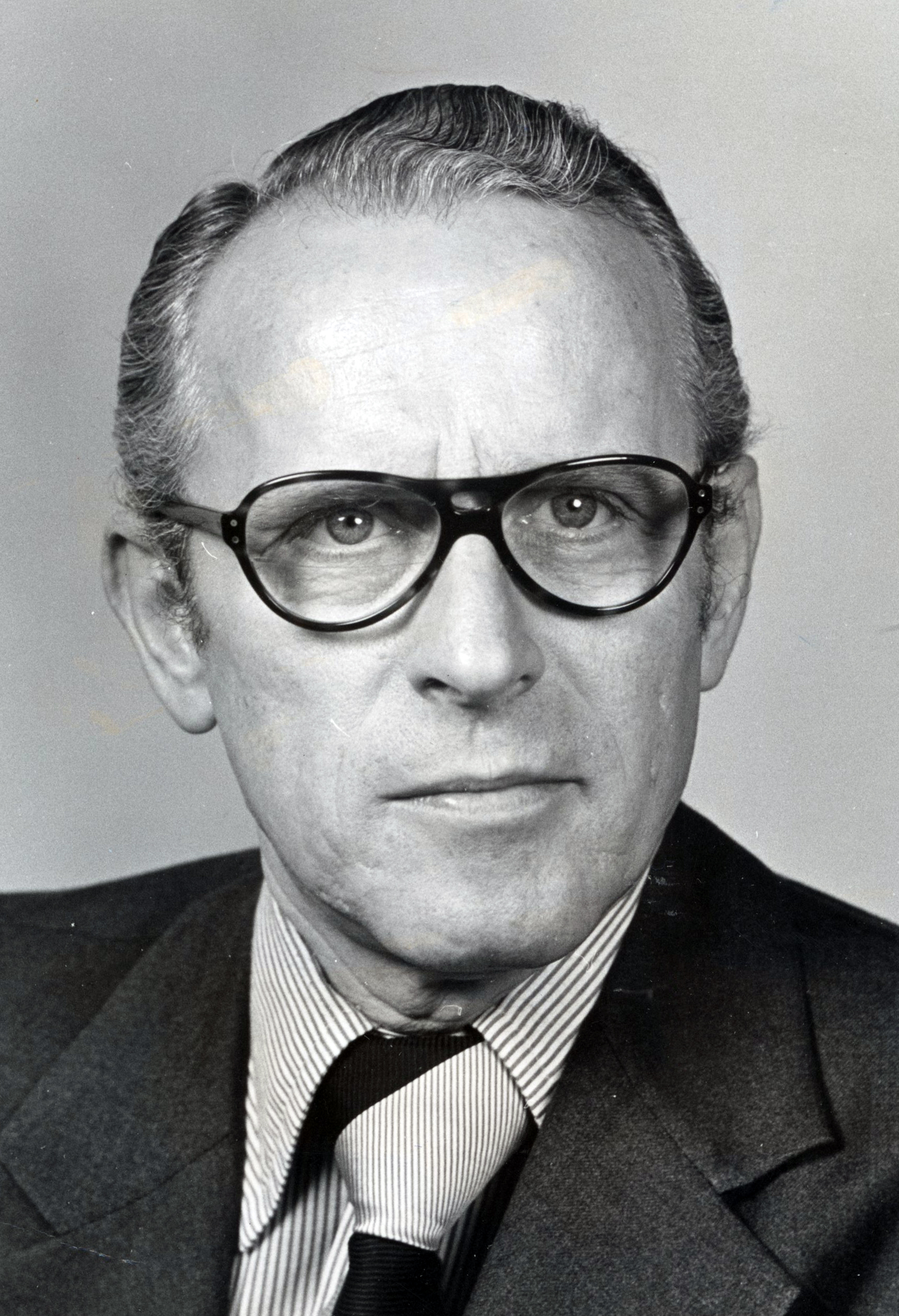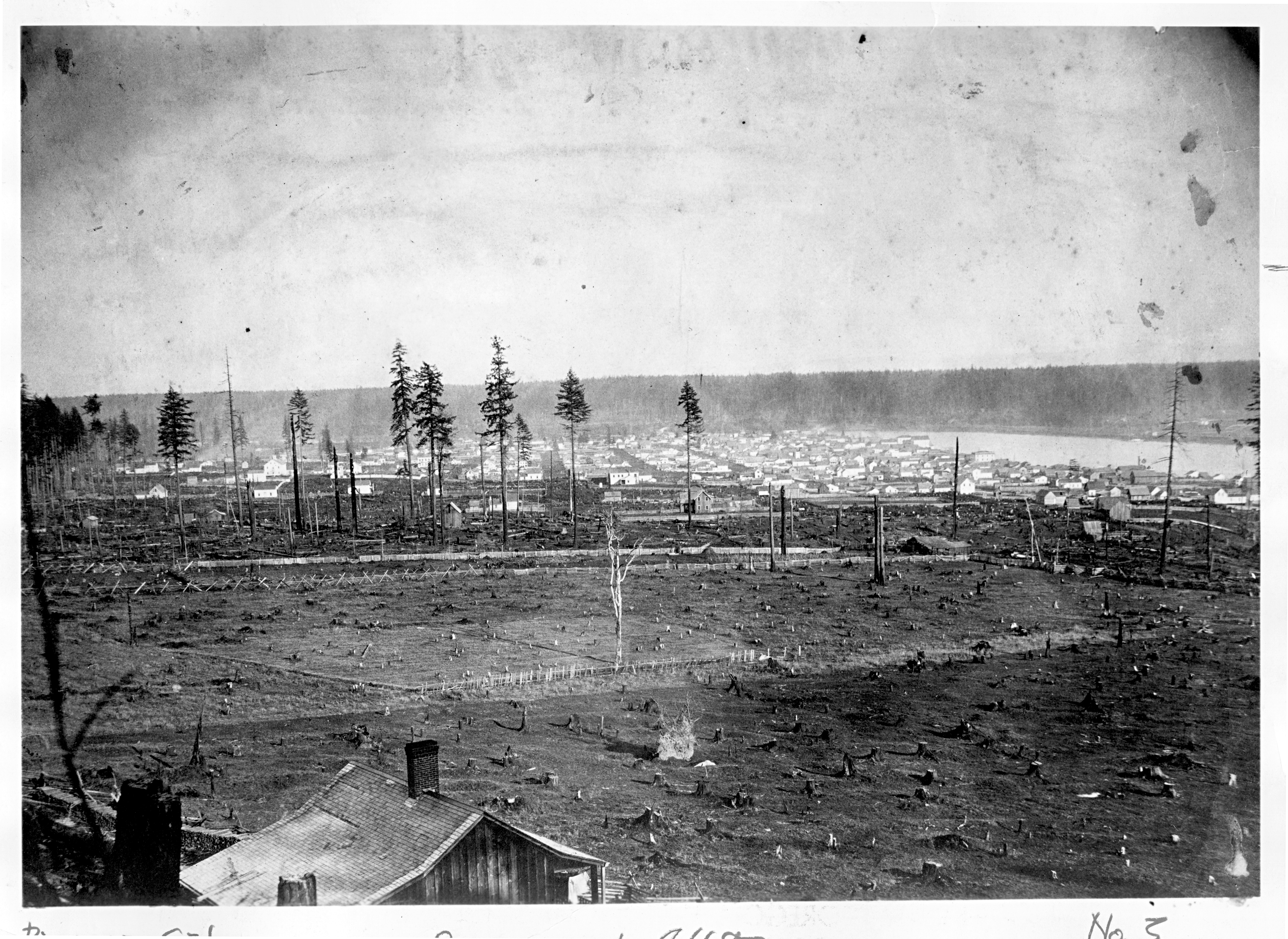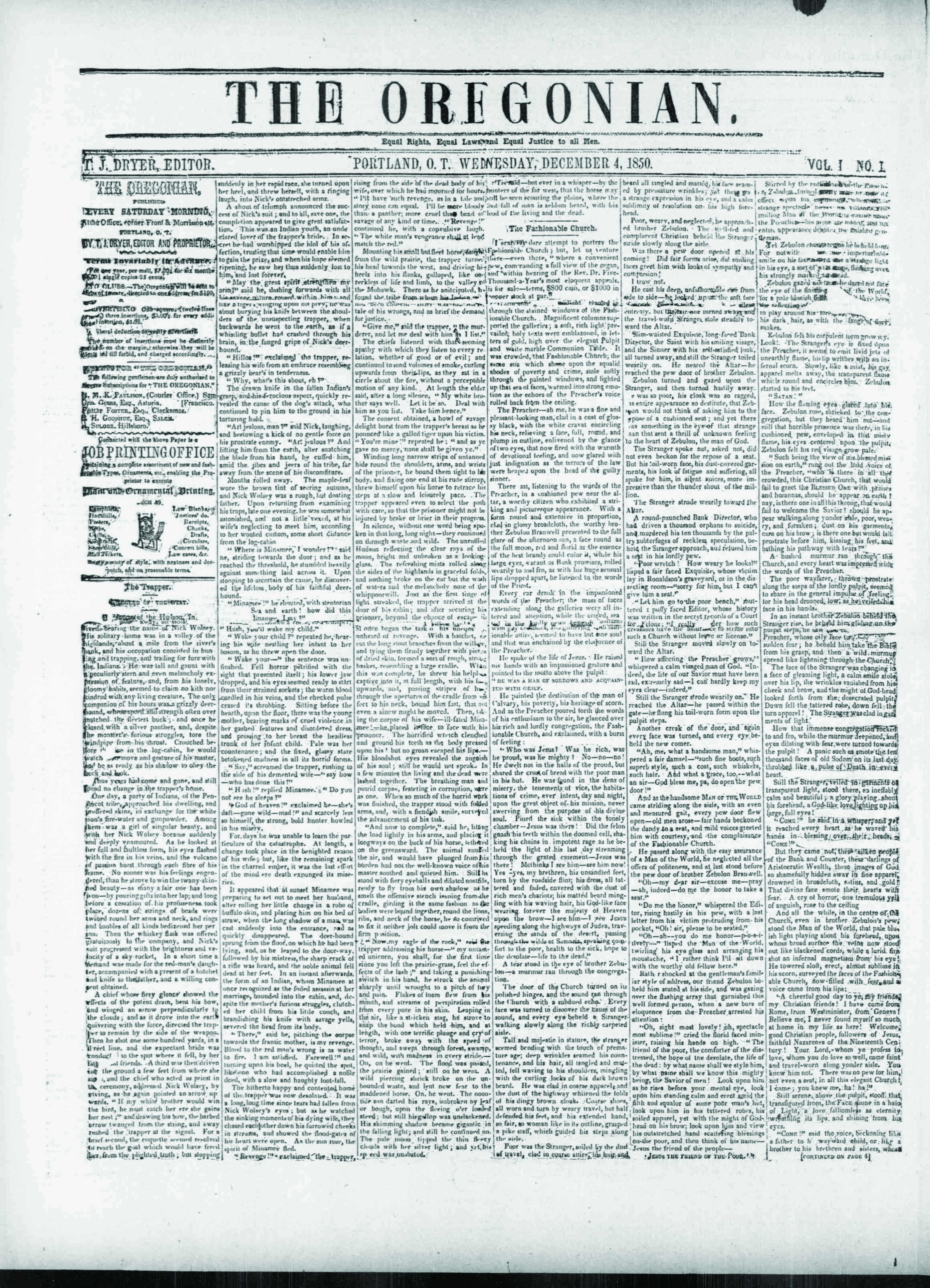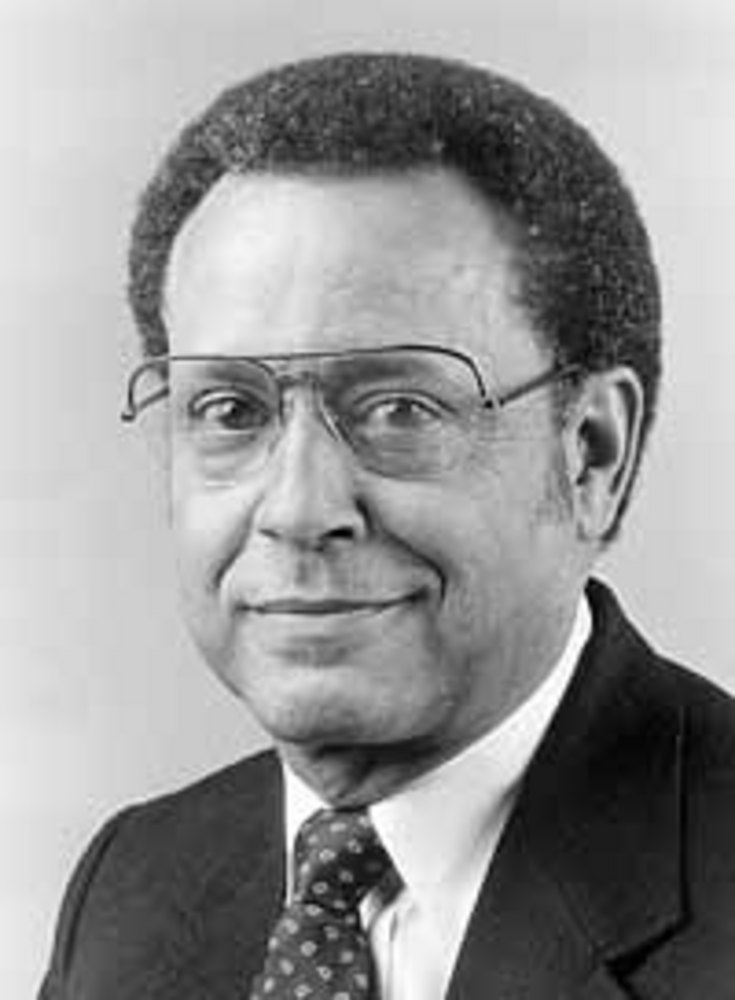During the thirty-four years that Fred Stickel served as publisher of the Portland Oregonian, the largest newspaper in the Pacific Northwest rose from obscurity to the top ranks of American journalism. It won dozens of national awards in reporting, writing, photography, and design and routinely appeared on the lists of top-ten American newspapers. More than one press critic described the Oregonian as the nation’s best regional paper. During one eight-year stretch, it won five Pulitzer Prizes, a record unsurpassed by any other regional newspaper.
Frederick Augustus Stickel was born on November 18, 1921, in Weehawken, New Jersey, where he lived before moving with his parents to Hoboken in 1938. He graduated from St. Peters College (now St. Peters University), a Jesuit school in Jersey City, in 1942 and joined the U.S. Marines. After completing Officer Candidate School, he married Peggy Dunne, a Weehawken woman who would be the center of his life for the next sixty-five years.
Stickel’s first combat assignment was on Guadalcanal in the Solomon Islands, where his unit flushed out starving Japanese stragglers. Later, he took heavy fire landing on Guam, an island in the North Pacific, where his weapons platoon spent thirty days in combat, with men under his command killed and wounded. Stickel spent the spring of 1945 recovering from dengue fever and other tropical ailments at the U.S. Navy hospital in San Diego. Promoted to captain, he served out the rest of the war as part of a guard detachment at a military airfield in Brooklyn, New York.
After the war, a family connection led to a job selling advertising for Hoboken’s Jersey Observer. Within a year, Fred and Peggy Stickel had the first of six children. In 1951, Fred Stickel went to work for S. I. Newhouse at the Jersey Journal, where he rose to head the advertising department. He caught Newhouse’s eye and was named publisher in 1966. Newhouse had acquired the Oregonian in 1950 and had added the city’s afternoon paper, the Oregon Journal, to the westernmost outpost of his growing empire in 1961. He named Fred Stickel president of The Oregonian Publishing Company in 1972 and promoted him to publisher in 1975.
By 1990, the Oregonian’s circulation had reached 421,000 on Sundays and 321,000 daily. Over 50 percent of the metropolitan area’s households subscribed—an extraordinarily high rate compared to other papers—with Sunday readership that included 80 percent of the area’s adults over the course of a month. The paper generated more revenue than any other Newhouse property.
Not long after Stickel arrived in Portland, he saw signs of decay in the central city and resolved that the downtown would not die like it had in Jersey City and Newark. He enthusiastically backed the 1972 Downtown Plan and was a founding member of the Association for Portland Progress. A leader in revitalizing city’s downtown, he was also a booster for the symphony, opera, and other cultural organizations, believing that the arts were key to maintaining a vital city.
Stickel led the Citizens Crime Commission and successful campaigns to increase jail space, improve police communications, and establish programs for fighting juvenile delinquency. He campaigned against an initiative that would have written job discrimination against homosexuals into the state constitution and published a signed page-one editorial against the measure in the Oregonian. “I don’t think anybody should be discriminated against,” Stickel said, “for any damn reason.” The ballot measure failed.
Fred Stickel’s commitment to downtown vitality, along with his efforts to fight crime and nourish the arts, produced an outpouring of recognition. He was named Portland First Citizen by the Portland Metropolitan Association of Realtors in 1996, and in 2002 Portland State University gave him its Urban Pioneer Award for “setting a 24-karat gold standard of urban-issues voluntary service.”
In 1982, Stickel closed the Journal and folded its staff into the Oregonian’s, naming Bill Hilliard editor of the combined operation. Hilliard, an African American, was a rarity in newspaper management, and his promotion reflected Stickel’s aversion to discrimination. Over the course of his career, the publisher would name women and gay employees to some of the company’s top jobs.
When Hilliard retired in 1994, Stickel hired Sandy Rowe, the editor of Norfolk’s Virginian-Pilot, as his replacement. She hired fifty new journalists over two years and ultimately expanded the full-time-equivalent newsroom staff to nearly four hundred. The entire company grew as well, to nearly 1,200 employees by 2007. The Oregonian’s circulation climbed to all-time highs of 450,000 on Sundays and 350,000 daily.
In 1998, business reporter Rich Read’s Pulitzer Prize for explanatory journalism began a record-setting string of five that included the Gold Medal for Public Service, the highest award in American journalism. The Oregonian also collected a steady stream of national awards for its coverage of food, gardening, travel, business, sports, and news and for features, photography, and design. As the paper’s journalistic performance reached new heights, the internet began to undermine its circulation and advertising revenue. By the time Fred Stickel retired in 2009, at the age of eighty-eight, daily and Sunday circulation had begun a long slide that would reach about 100,000 for each by 2020.
Fred Stickel died in 2015. The legacy of the newspaper’s longest tenured and most successful publisher will surely be the journalism produced during the years his name appeared at the top of the Oregonian’s masthead. “This paper will forever date some of its best achievements,” Rowe said after he died, “to the time when Fred Stickel was publisher.”
-
![]()
Fred Stickel, July 1978.
Oregon Historical Society Research Lib., Oregon Journal, Lot 1027, box 147, f20
-
![]()
Fred Stickel and Donald Sterling, Jr., pose with the first edition of the Oregon Journal to be printed at the new Oregonian plant, October 2, 1974.
Oregon Historical Society Research Lib., Oregon Journal, Lot 1027, box 147, f20
-
![]()
Fred Stickel, Mayor Terry Schrunk, and Glenn Jackson sign for the city and state purchase of the Journal Building on Harbor Drive, June 1968..
Oregon Historical Society Research Lib., Oregon Journal, Lot 1027, box 147, f20
-
![]()
Fred Stickel, July 1975.
Oregon Historical Society Research Lib., Oregon Journal, Lot 1027, box 147, f20
Related Entries
-
![Portland]()
Portland
Portland, with a 2020 population of 652,503 within its city limits and …
-
![South Portland/South Auditorium Urban Renewal Project]()
South Portland/South Auditorium Urban Renewal Project
In 1955, a Mayor’s Advisory Committee identified the blocks at the sout…
-
![The Oregonian]()
The Oregonian
The Oregonian, the oldest newspaper in continuous production west of Sa…
-
![William A. Hilliard (1927-2017)]()
William A. Hilliard (1927-2017)
William A. Hilliard was the first African American editor of the Oregon…
Related Historical Records
Map This on the Oregon History WayFinder
The Oregon History Wayfinder is an interactive map that identifies significant places, people, and events in Oregon history.
Further Reading
Interview with Fred Stickel, by Jack Hart. 2007.



